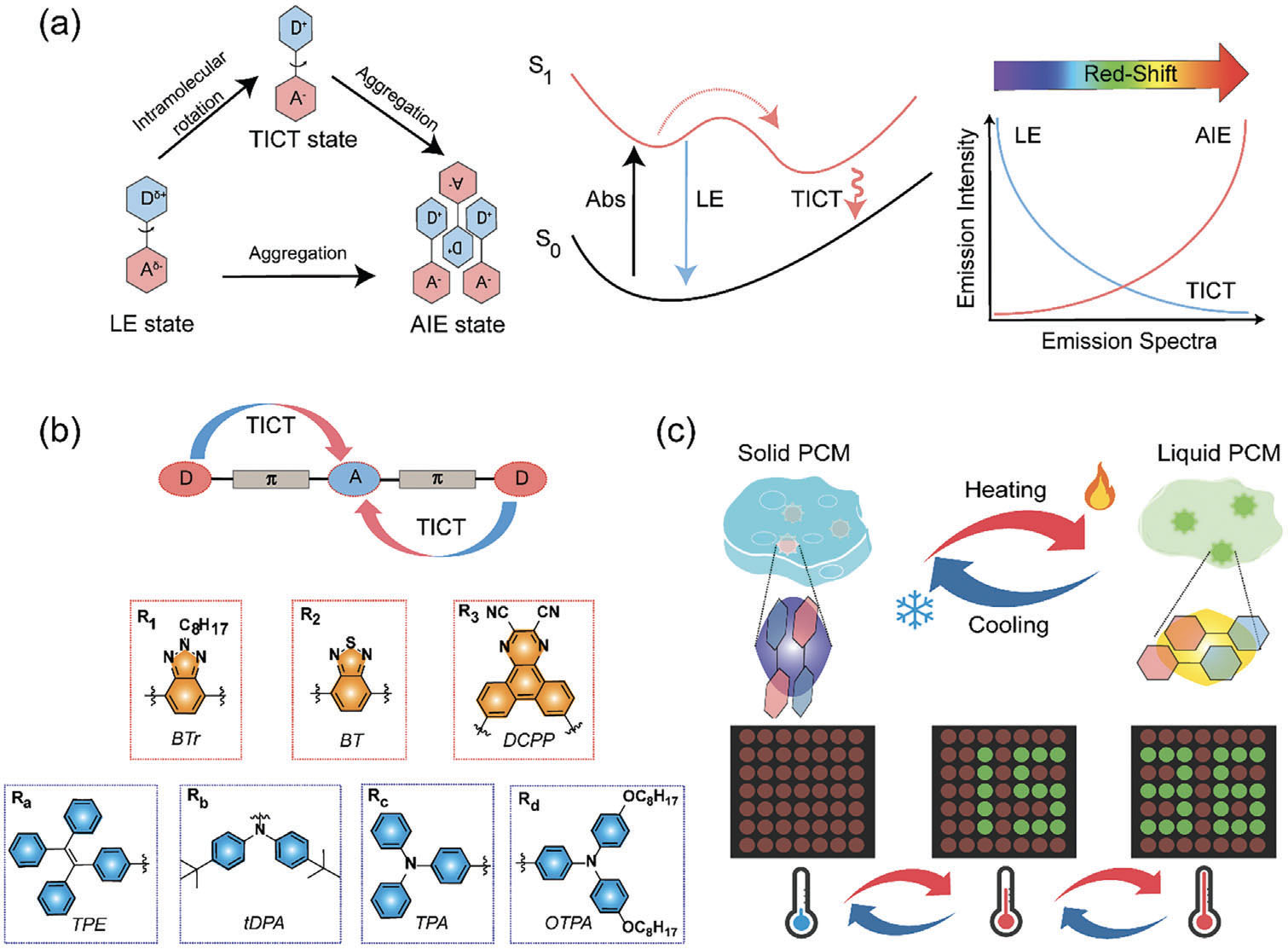| Sep 26, 2023 | |
Transistor-inspired ultra-sensitive materials heat up advanced data security |
|
| (Nanowerk Spotlight) As data storage needs explode in the digital age, scientists are searching for new ways to securely encrypt information. Thermochromic fluorescent materials (TFMs) have gained significant attention in information storage and anti-counterfeiting. These materials change color and glow when heated, revealing hidden data. This unique feature allows for a physical form of secure encryption. Unlike traditional encryption methods that use algorithms, TFMs require a specific 'trigger' temperature to reveal the encoded information. This makes them highly secure and difficult to tamper with, making them ideal for anti-counterfeiting and secure data storage applications. | |
| Recently, researchers in China developed ultra-sensitive TFMs that could enable more advanced encryption capabilities. The team created TFMs that change properties drastically within a narrow 2-3 °C temperature range, providing very precise and reversible switching between hidden and visible states. Such ultra-sensitive and reversible switching enables multi-level encryption using a single material, which is highly desirable for anti-counterfeiting and secure data storage applications. | |
| The researchers have published their findings in Advanced Materials ("A General Strategy for Developing Ultrasensitive “Transistor-Like” Thermochromic Fluorescent Materials for Multilevel Information Encryption"). | |
 |
|
| Schematic illustration of the proposed working mechanism of TFMs in response to temperature changes. a) The transition of the photochemical process (LE, TICT, and AIE effect) of the emitters within the as-designed TFMs. b) The structure of designed fluorophores with different D, π, and A groups. c) The proposed mechanism of the PCMs regulating the fluorescence in information encryption. (Reprinted with permission by Wiley-VCH Verlag) (click on image to enlarge) | |
| Previously developed TFMs had limitations like wide temperature response ranges and low sensitivity, restricting their practical use. To enhance the effectiveness of the material, the researchers carefully combined two types of substances. The first type is 'polarity-sensitive fluorescent molecules,' which are special molecules that glow under certain conditions and are sensitive to the electrical nature of their surroundings. 'Polarity' refers to the distribution of electrical charge in a molecule, and these molecules are designed to respond to changes in that distribution. | |
| The second type of substance is 'long-chain alkanes,' which are essentially long strings of carbon and hydrogen atoms. Alkanes are known for their stable and non-reactive characteristics. By systematically pairing these polarity-sensitive fluorescent molecules with long-chain alkanes, the researchers were able to create a material that reacts in a very specific and desirable way when exposed to changes in temperature. | |
| The fluorescent molecules were specifically engineered to have strong “push-pull” molecular structures optimizing sensitivity to their environment. At cool temperatures, these molecules aggregate together, quenching fluorescence through twisted conformations. But when heated past the melting point of the loaded alkanes, the environment becomes non-polar, allowing the molecules to fluoresce brightly. | |
| The researchers prepared TFMs emitting different colors from blue to red by modifying the fluorescent molecules’ chemical structures. Pairing molecules with long-chain alkanes like heneicosane produced TFMs with unprecedented switching sensitivity. Some formulations showed over 9500-fold fluorescence enhancement within a 2-3 °C increase, far exceeding previous TFMs. | |
| Such ultra-sensitive and reversible switching enables multi-level encryption using a single material. For example, the team fabricated a device encoding the numbers “157,” “369,” and “888” readable at three specific temperatures from 41-52 °C. This 10 –C span allows at least 3 encryption levels in one compact device. | |
| The researchers also produced water-dispersible nanoparticles incorporating their optimized TFMs without compromising performance. Tests showed the nanoparticles reliably fluoresce in response to heating/cooling for over 50 cycles. This durability alongside biocompatibility could enable future applications like heat-triggered drug release. | |
| Capitalizing on tunable emission colors, the team further demonstrated multi-colored multi-level encryption. One device revealed green, blue and orange numbers at successive temperature thresholds, encrypting more complex hidden messages. | |
| Overall, this rational design strategy produced TFMs with unprecedented switching sensitivity across configurable temperature triggers. The researchers suggest these “transistor-like” materials could help drive advances in fields relying on precise external control over material properties like drug delivery, sensing, and energy storage. Their exceptional performance also unlocks new possibilities for highly secure thermal encryption using a simple, reversible stimulation. | |
 By
Michael
Berger
– Michael is author of three books by the Royal Society of Chemistry:
Nano-Society: Pushing the Boundaries of Technology,
Nanotechnology: The Future is Tiny, and
Nanoengineering: The Skills and Tools Making Technology Invisible
Copyright ©
Nanowerk LLC
By
Michael
Berger
– Michael is author of three books by the Royal Society of Chemistry:
Nano-Society: Pushing the Boundaries of Technology,
Nanotechnology: The Future is Tiny, and
Nanoengineering: The Skills and Tools Making Technology Invisible
Copyright ©
Nanowerk LLC
|
|
|
Become a Spotlight guest author! Join our large and growing group of guest contributors. Have you just published a scientific paper or have other exciting developments to share with the nanotechnology community? Here is how to publish on nanowerk.com. |
|
